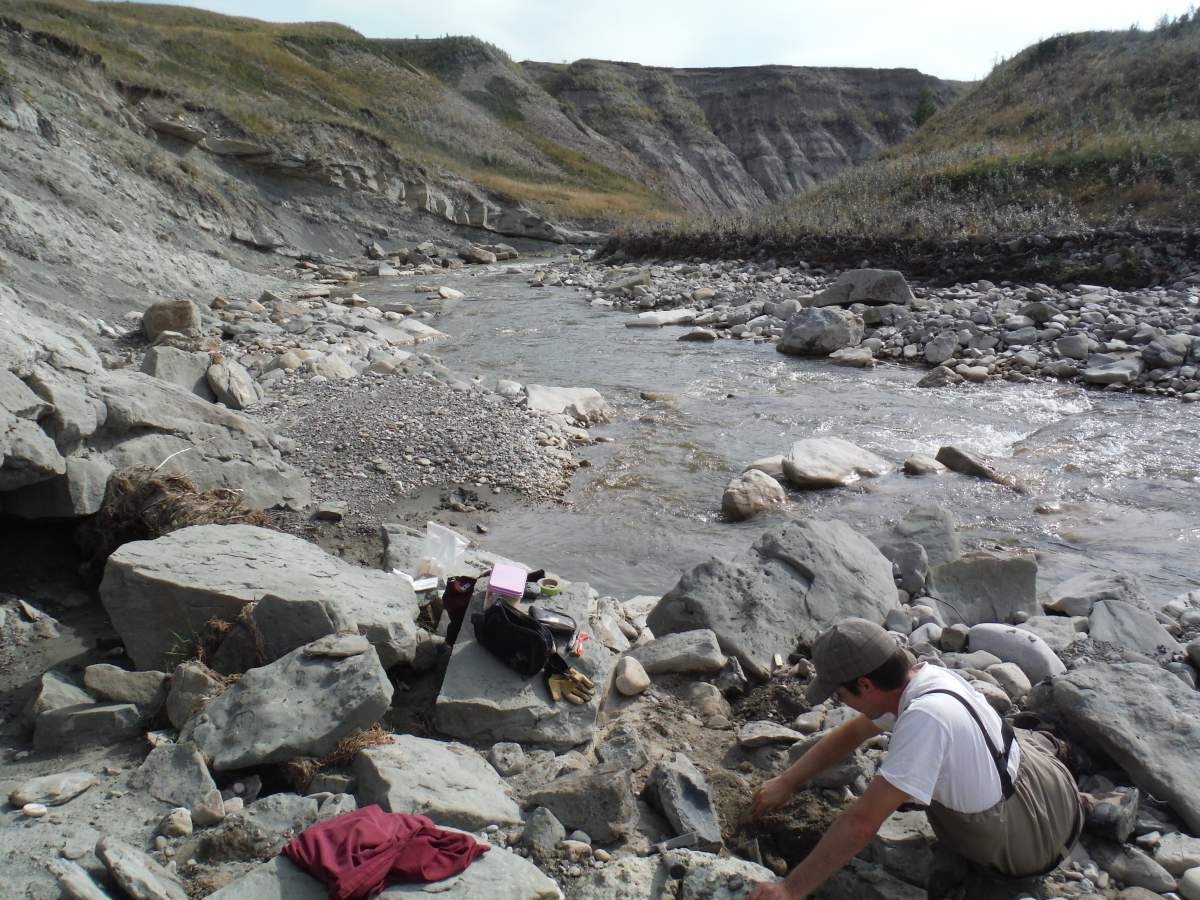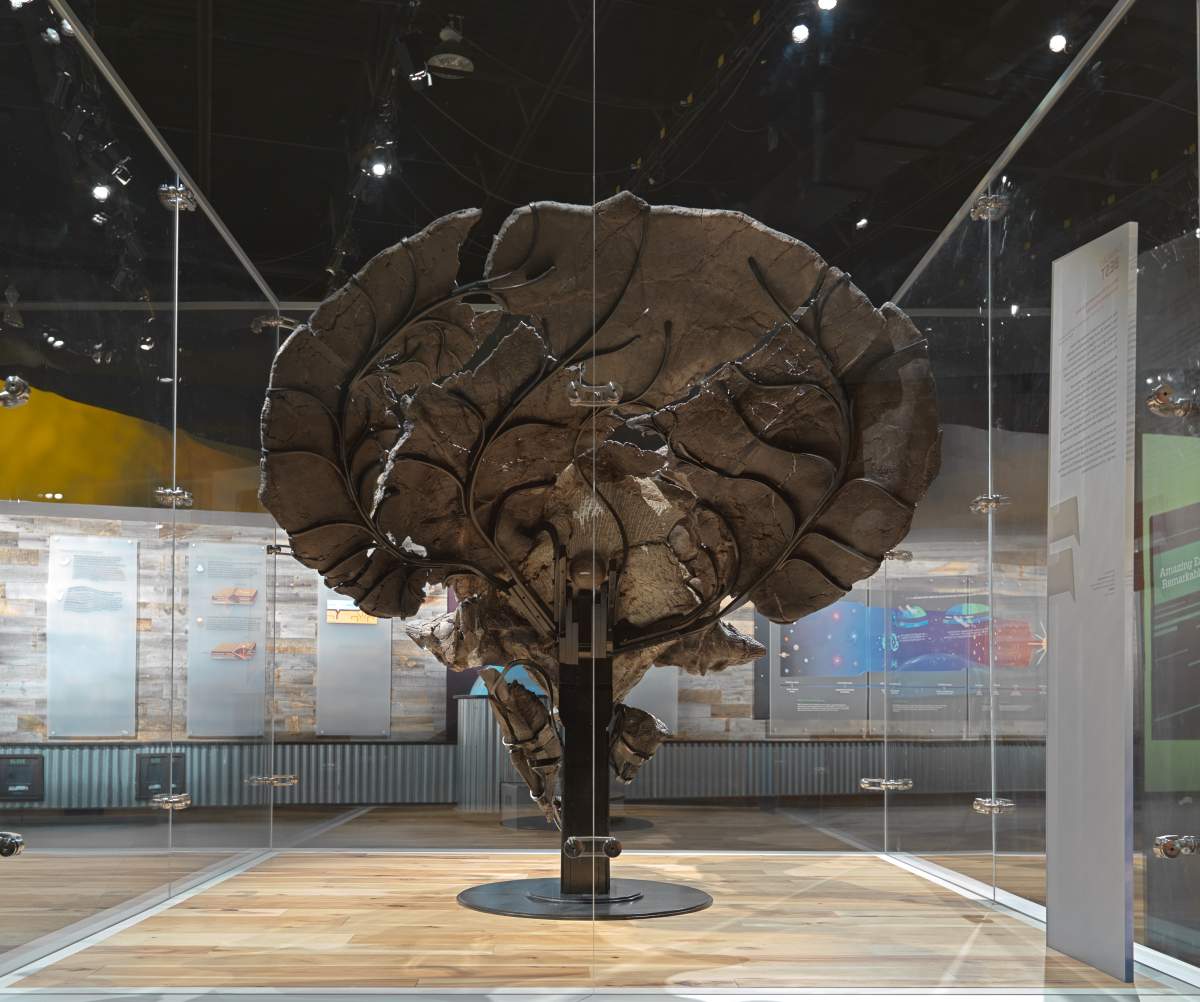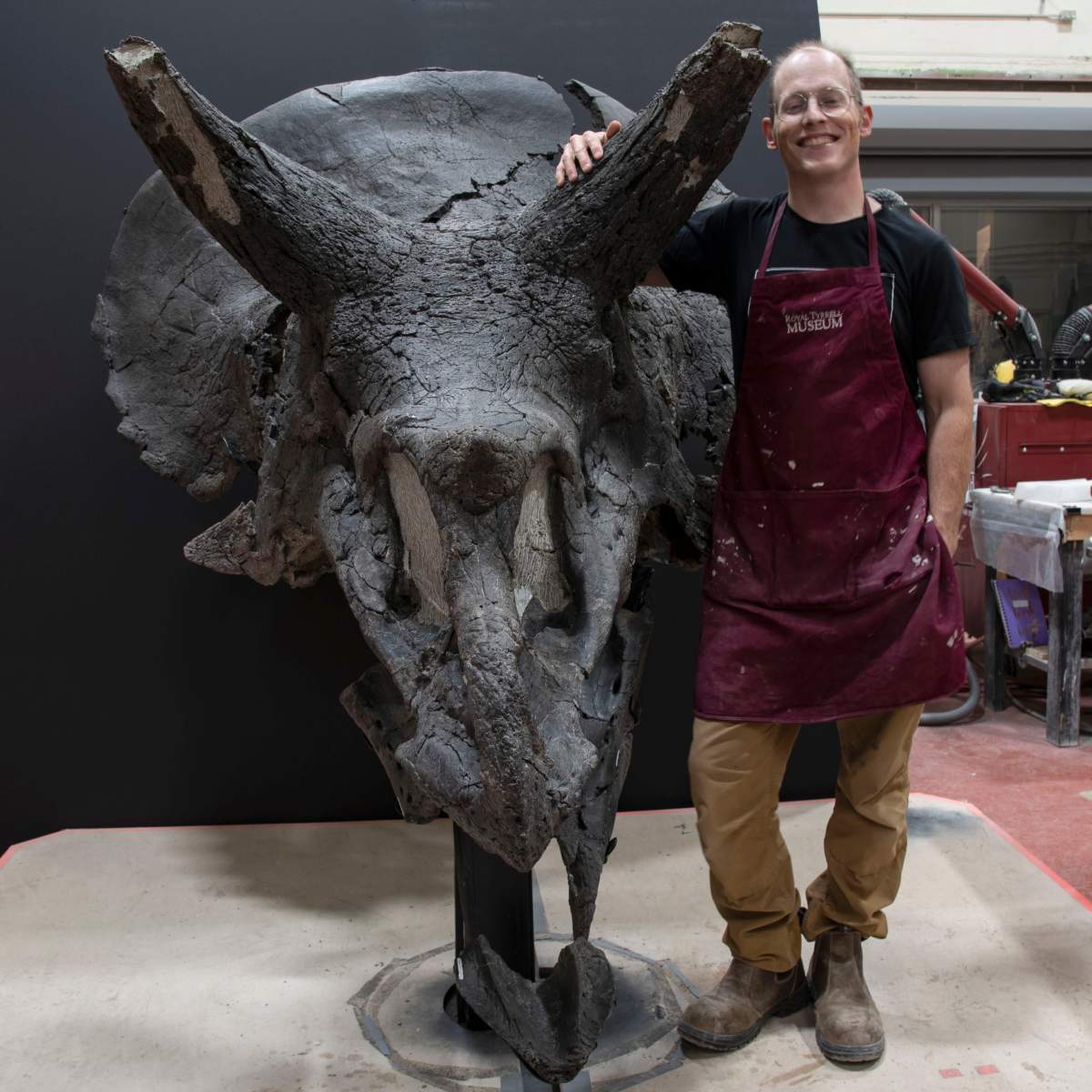Lovers of paleontology are in for a treat as the Royal Tyrrell Museum unveiled a massive triceratops skull that was collected by the museum’s technicians in 2015.

On Thursday, a preserved triceratops skull will be on display for the first time as part of the museum’s new Fossils in Focus exhibit.
“This is the most complete and best-preserved triceratops skull in Canada,” said Caleb Brown, curator of dinosaur systematics and evolution at the museum.
The ceratopsians are a group of beaked plant-eating dinosaurs that roamed the earth during the Cretaceous period. According to the Royal Tyrrell Museum, triceratops fossils are quite uncommon in Canada. This specimen was collected in the southwestern Alberta foothills. It was found along Callum Creek, a tributary of the Oldman River, about two hours south of Calgary.
“Using hand tools, I was digging and all of a sudden, I hit a portion where I just flipped over some rock and there was the top of the right horn. And now that we knew we had both the left and the right horn, we had a pretty good idea that whole skull was in there,” said Joe Sanchez, head technician at the museum.
The dinosaur lived between 69 and 68 million years ago and its skull measures more than six feet from the tip of the beak to the top of the frill. The frill (the bony shield on the back of the skull) alone is more than five feet wide.
The museum says this dinosaur was not fully mature, and it likely would have grown to a larger size if it had lived longer. The tips of the brow horns eroded away shortly after it died.
Museum technicians encountered this triceratops specimen in 2014 when they were conducting flood mitigation paleontology work after heavy flooding in southern Alberta in 2013. They gathered the skull and most of the lower jaws over the span of a month in the fall of 2015. The material was extracted in blocks and a helicopter was needed to transport it from the site. The remainder of the skeleton was not located.
“The idea was to go out to known sites, and to check and see if those sites have been damaged from the flood from all the erosion, but also to survey those river systems and see if new fossil sites had been exposed from all the erosion from the flood,” said Brown.

Get breaking National news
“Our crew surveyed more than 200 kilometres of waterways, they found more than 200 new fossil sites and collected almost 500 specimens. But this was the best thing in my opinion.”
The skull is attached to a steel stand designed by artists Lynn Gratz, Sandra Dunn, Bronson Kodos and Aimie Botelho in a shop in Strathmore, Alta., just an hour away from the museum. The elaborate frame they designed gives visitors a 360-degree view of the triceratops skull.
“Technician Ian Macdonald started work to prepare this spectacular specimen for research and display in 2016. Over the course of seven years, and 6,500+ hours of work, he removed more than 815 kilograms of hard rock to expose the skull. Ian finished preparing the specimen in spring 2023. Its nickname, ‘Calli,’ is a reference to Callum Creek, where the skull was found,” the Royal Tyrrell Museum said in a statement Thursday.
After spending so much time reconstructing the skull, MacDonald says he has mixed feelings about the process being complete.
“I’ve spent so many years up close to this thing, leaning against it or having my arm around the horn while I worked on the side of the face or just being in close contact with her. I was feeling a little sad that I wasn’t going to get to do that anymore. She was going to be behind the case. But seeing her out here, like with the lights on and all the people around is actually pretty exciting,” said Ian MacDonald.
Anyone that discovers a fossil in Alberta is encouraged to contact the museum.
“If people who are out there find a fossil, they think is exciting, email the museum. We have a whole reporting system, check out our websites, because some of those will turn out to be very important and scientifically significant specimens,” said Brown.
“There have been specimens that have been on display before and here that were found by fishermen out on these different rivers,” said Sanchez.
Next the museum will conduct research on the skull and publish their findings.
“One of my jobs now is to compare this to all the other triceratops specimens and see how it compares. We also have to figure out the age in the environment where it was preserved, because that will tell us about the specimen and how old it is.” said Brown.
The skull will be on display at the Royal Tyrrell Museum throughout the fall and winter, Tuesday to Sunday from 10 a.m. to 5 p.m.













Comments